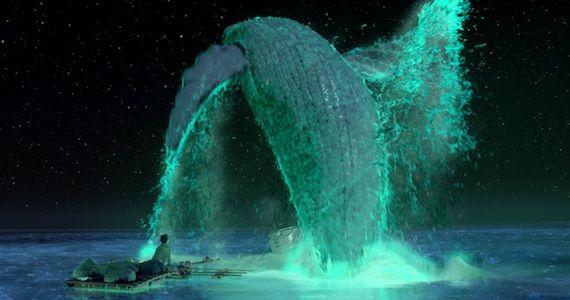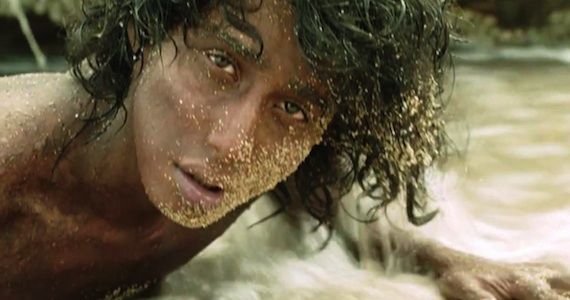In the past, I have only written three posts on movies. With the first one, I found myself in a debate with the Writer/ Director of the film via twitter. You can read that post here: What They Didn’t Tell You in Looper. The second time, my post went viral. If you type in “Cloud Atlas Explained” in Google, my blog is the first one that populates.
Yesterday, I watched the movie, Life of Pi, based on Yann Martel’s novel by the same title. The movie closely follows the book—a young Indian boy and his family travel across the Pacific on a giant shipping vessel, when unexpectedly the ship sinks in a horrific storm, killing nearly everyone onboard. The only survivors are Pi, a tiger, a hyena, a zebra, and an orangutan.
Much like the book, the ending is left open for interpretation.
Pi eventually drifts to the shores of Mexico where he is taken to a Mexican hospital. During his recovery, two Japanese officials interview Pi so they can complete their report on the sinking vessel.
Pi tells his story—he is stranded on a small lifeboat with the aforementioned animals and remains adrift for 227 days. On the first day, the hyena kills the already wounded zebra and the sweet orangutan. Then the tiger, named Richard Parker, kills the hyena.
And then there were two…
Pi proceeds to tell the Japanese men this improbable story of him and the tiger, and how they stumbled upon a mysterious island. The Japanese men are reluctant to write the story they have been told because it is too unbelievable.
Pi then says, ‘Fine, let me tell you a different version of what happened.’
He tells them a different version of the story: one that uses humans instead of animals. Instead of the hyena killing the zebra and sweet orangutan, it was the cook. Then instead of the tiger killing the hyena, it is Pi who kills the cook out of revenge or self-preservation. The orangutan represents his mother, the zebra represents some wounded Japanese sailor, the tiger is Pi, and all the other fantastical elements of the story were stripped away leaving a much more disturbing, but believable depiction.
After describing both stories to the men, he asks them which version of the story they prefer.
In the movie, when the now grown-up Pi describes the human story, there is a great deal of anguish on his face. This may lead people to believe that the human story is the real story; however, this look is not present in the book. In the novel, it almost seems like Pi is annoyed with the two men and tells them a much more “believable” story in order for them to complete their report.
This leads me to believe that the animal story is the real story. After all, what reason does Pi have to make that up, especially when he is willing to tell both versions?
So although the human story makes a lot of sense, it was not intended to be a twist ending. The author leaves the question unanswered for the audience to draw their own conclusion, almost as if we are the Japanese men. Whatever story you prefer, is intended to gauge your belief in God. Either you believe in things that can be explained rationally, or you allow room for such things as miracles and God.
At the onset, Pi claims that his story will make a person believe in God. By the end, he has turned the skeptic into a believer. This is represented by the skeptical Japanese officials who state in their closing report that Pi survived 227 days at sea with a tiger.
In the book, we don’t get to the boat until page 130. In the pages leading up to that, it describes Pi’s upbringing, his family life, and his discovery of different Gods. At first, I thought this was a way to pad the story. As a writer, I can imagine how difficult it would be to write a full-length novel about a boy on a boat with a tiger for 227 days.
But upon seeing the movie, I gained a different perspective of that proceeding narrative. Pi approaches God from many different religions in order to show the importance of having an open mind and being tolerant of other people’s beliefs. Like his story, some may prefer to live an empirical life, or some may prefer a more theoretical life.
One final point: Why didn’t Richard Parker look back? This was done to showcase the lesson Pi’s father taught him—‘Richard Parker is not your friend, he is a wild animal.’
See Also:



